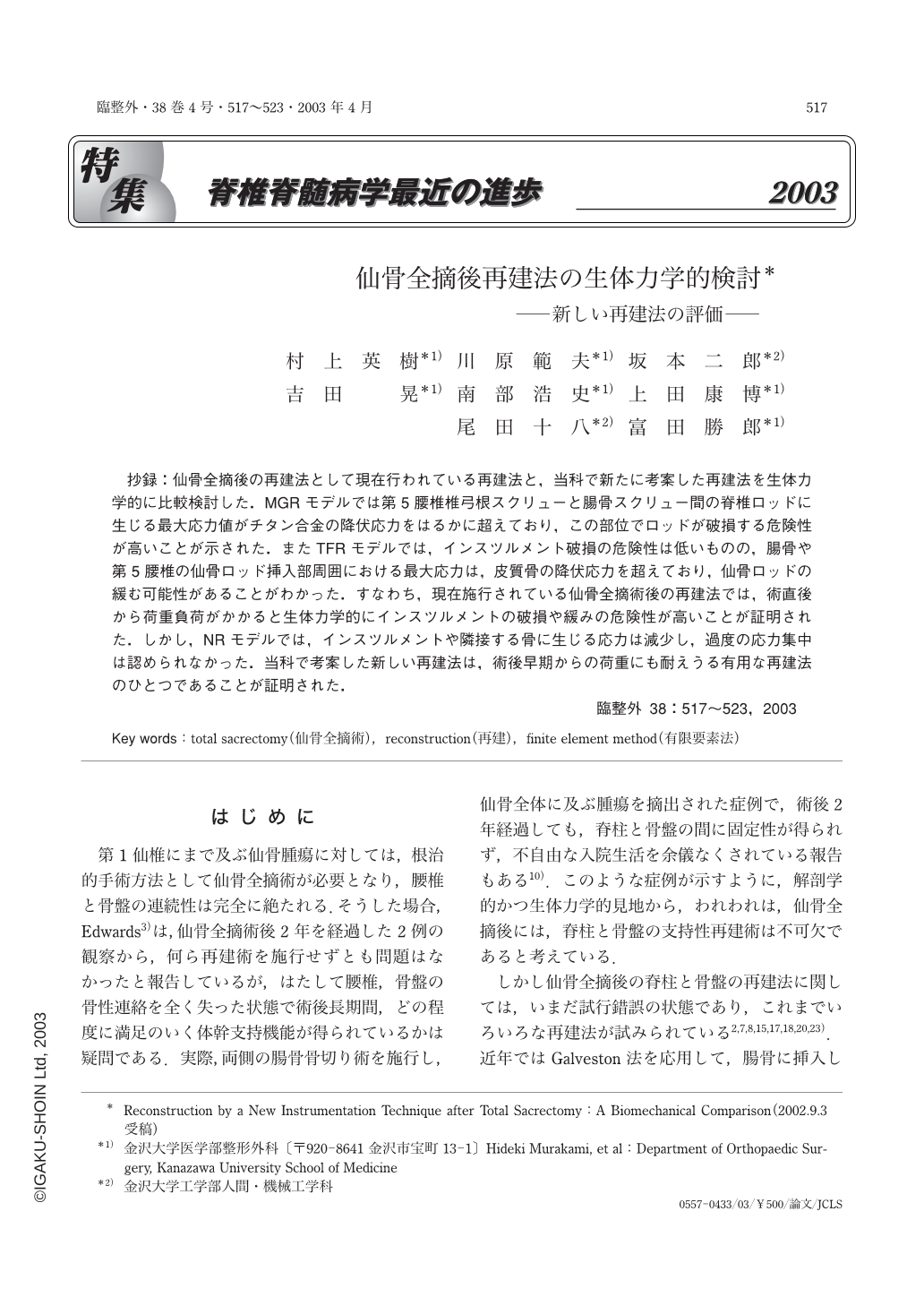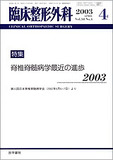Japanese
English
- 有料閲覧
- Abstract 文献概要
- 1ページ目 Look Inside
抄録:仙骨全摘後の再建法として現在行われている再建法と,当科で新たに考案した再建法を生体力学的に比較検討した.MGRモデルでは第5腰椎椎弓根スクリューと腸骨スクリュー間の脊椎ロッドに生じる最大応力値がチタン合金の降伏応力をはるかに超えており,この部位でロッドが破損する危険性が高いことが示された.またTFRモデルでは,インスツルメント破損の危険性は低いものの,腸骨や第5腰椎の仙骨ロッド挿入部周囲における最大応力は,皮質骨の降伏応力を超えており,仙骨ロッドの緩む可能性があることがわかった.すなわち,現在施行されている仙骨全摘術後の再建法では,術直後から荷重負荷がかかると生体力学的にインスツルメントの破損や緩みの危険性が高いことが証明された.しかし,NRモデルでは,インスツルメントや隣接する骨に生じる応力は減少し,過度の応力集中は認められなかった.当科で考案した新しい再建法は,術後早期からの荷重にも耐えうる有用な再建法のひとつであることが証明された.
Total sacrectomy is necessary when a sacral tumor involves the first sacral vertebra, and although reconstruction of the continuity between the spine and the pelvis is mandatory after total sacrectomy, there have been no reports of biomechanical studies of the reconstructed lumbosacral spine. The purpose of this study was to evaluate methods of reconstruction after total sacrectomy by performing a finite element analysis. The stresses exerted on the instrumentation and adjacent bone by three reconstruction methods after total sacrectomy were evaluated:modified Galveston reconstruction (MGR) by the Galveston method, the triangular frame reconstruction (TFR) that has been performed in our institution, and a novel reconstruction (NR) which we developed to prevent stress concentration. A finite element model of the lumbar spine and pelvis was constructed. Three-dimensional MGR, TFR, and NR models were then reconstructed, and the finite element analysis was performed to account for the stresses on the bones and instrumentation. With MGR, excessive stress was concentrated on the spinal rod, and there was a strong possibility of the rod between the spine and the pelvis failing. Although there was no stress concentration on the instruments with TFR, excessive stress on the iliac bones around the sacral rod exceeded the yield stress of the iliac bone, and such stress could cause loosening of the sacral rod from the iliac bone. With NR, excessive stress concentration was not detected in the rod or the bones. If the patient were to stand or sit immediately after MGR or TFR, instrumentation failure or loosening might occur, whereas the NR is associated with a low risk of instrument failure and loosening after a total sacrectomy.

Copyright © 2003, Igaku-Shoin Ltd. All rights reserved.


